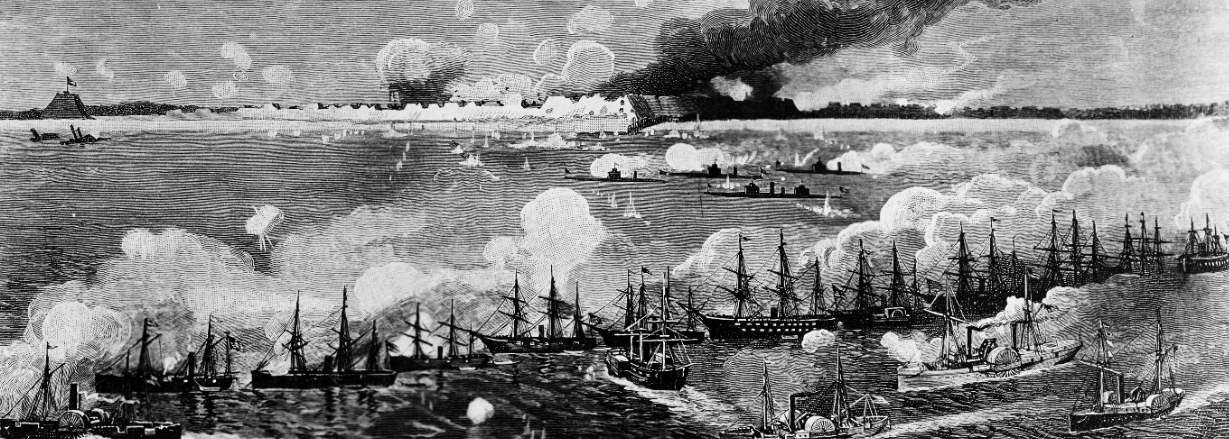Civil War Naval Operations and Engagements
1865
T. Shussler, J.O. Davidson,The Bombardment of Fort Fisher, January 15, 1865, reproduced from Clarence Clough Buel, Robert Underwood Johnson, eds., Battles and Leaders of the Civil War: Being for the Most Part Contributions by Union and Confederate Officers : Based Upon "The Century War Series (United States: Century Company, 1887), 656 [NH 2051].
Note: This page currently contains only summaries of the individual battles as the complete studies for each engagement are in progress.
Fort Fisher II
12–15 January 1865
On 12 January 1865, the U.S. combined forces renewed their efforts to capture Fort Fisher and close the port at Wilmington, North Carolina, to Confederate blockade-runners. In the second battle for Fort Fisher, Rear Admiral David Dixon Porter returned with more than 60 ships to bombard the fort again. Major General Alfred Terry, U.S. Army, was in charge of the amphibious landing. Their combined assault on the fort ultimately resulted in the surrender of the Confederate garrison. The capture of Wilmington quickly followed the fall of Fort Fisher.
Trent’s Reach
23–25 January 1865
On 23 January 1865, the Confederate James River Squadron under command of Commodore John K. Mitchell, C.S. Navy, embarked on a last-ditch effort to clear the obstructions in the James River at Trent’s Reach and threaten General Ulysses S. Grant’s headquarters at City Point. Although the squadron reached the obstructions, two ships ran aground and the squadron was subject to intense artillery fire from Federal shore batteries. On 25 January, Captain William A. Parker and the crew of the U.S. Navy monitor Onondaga confronted what remained of the James River squadron. The surviving ships quickly retreated upriver. This three-day struggle to reach City Point was the last offensive action of the James River squadron.



